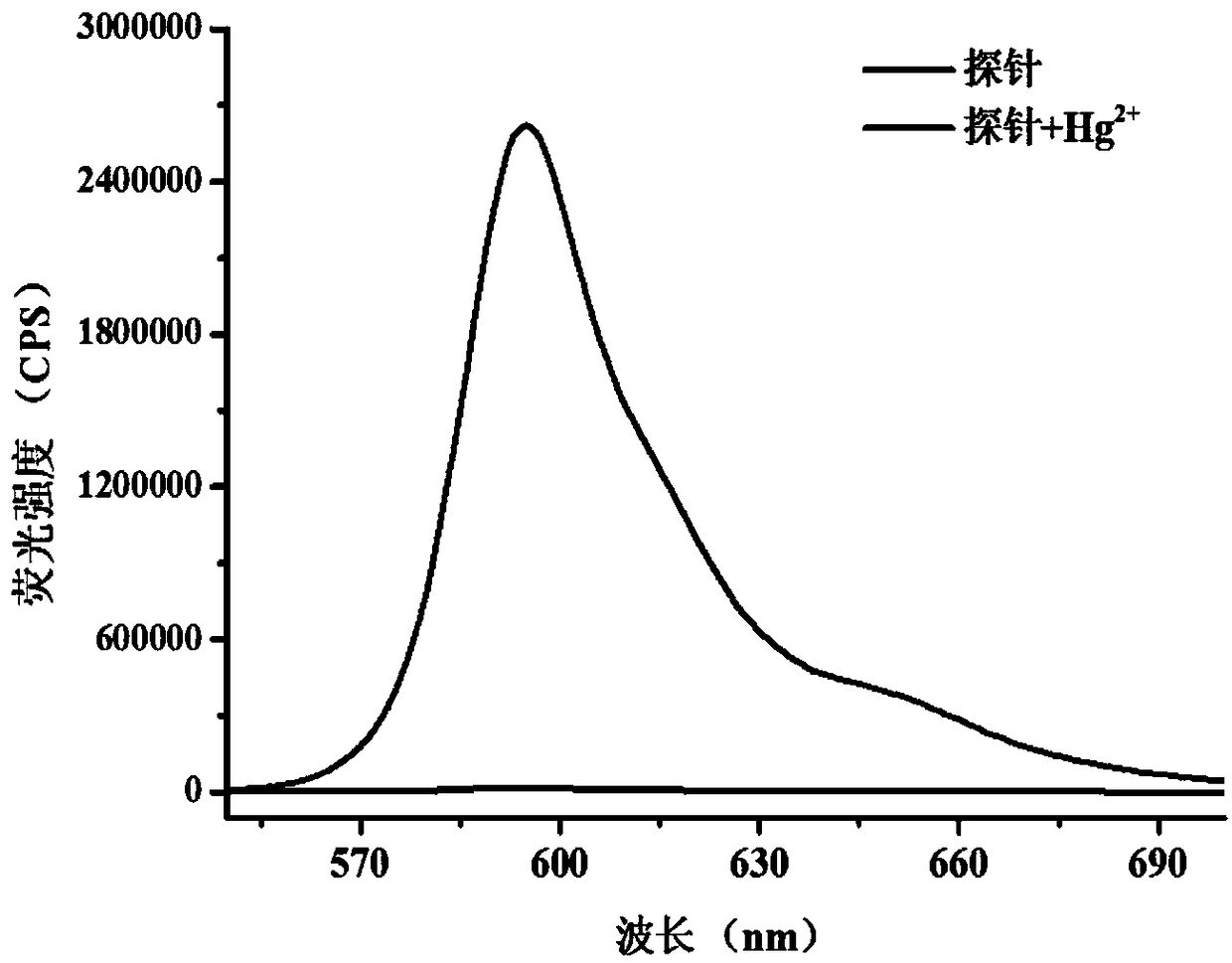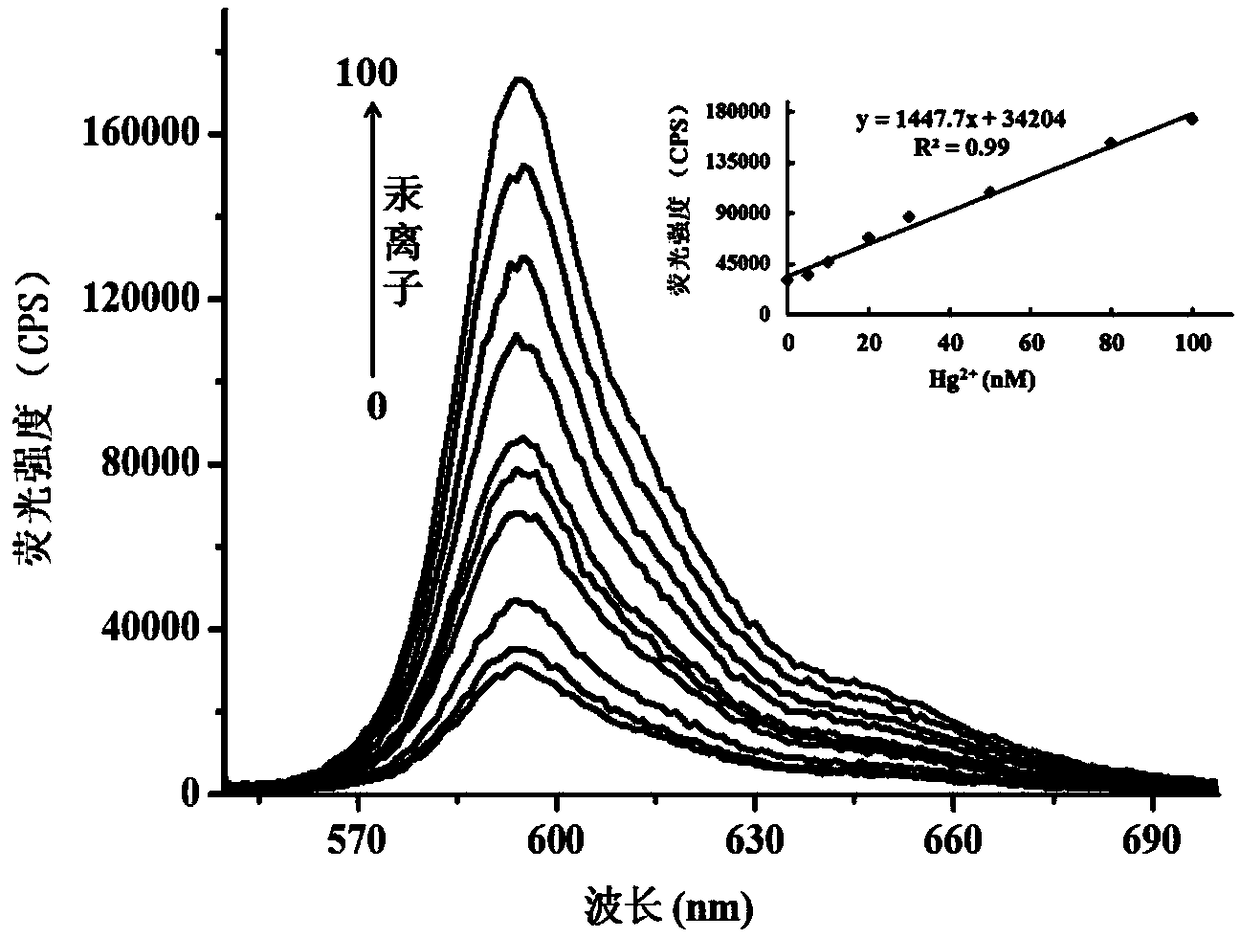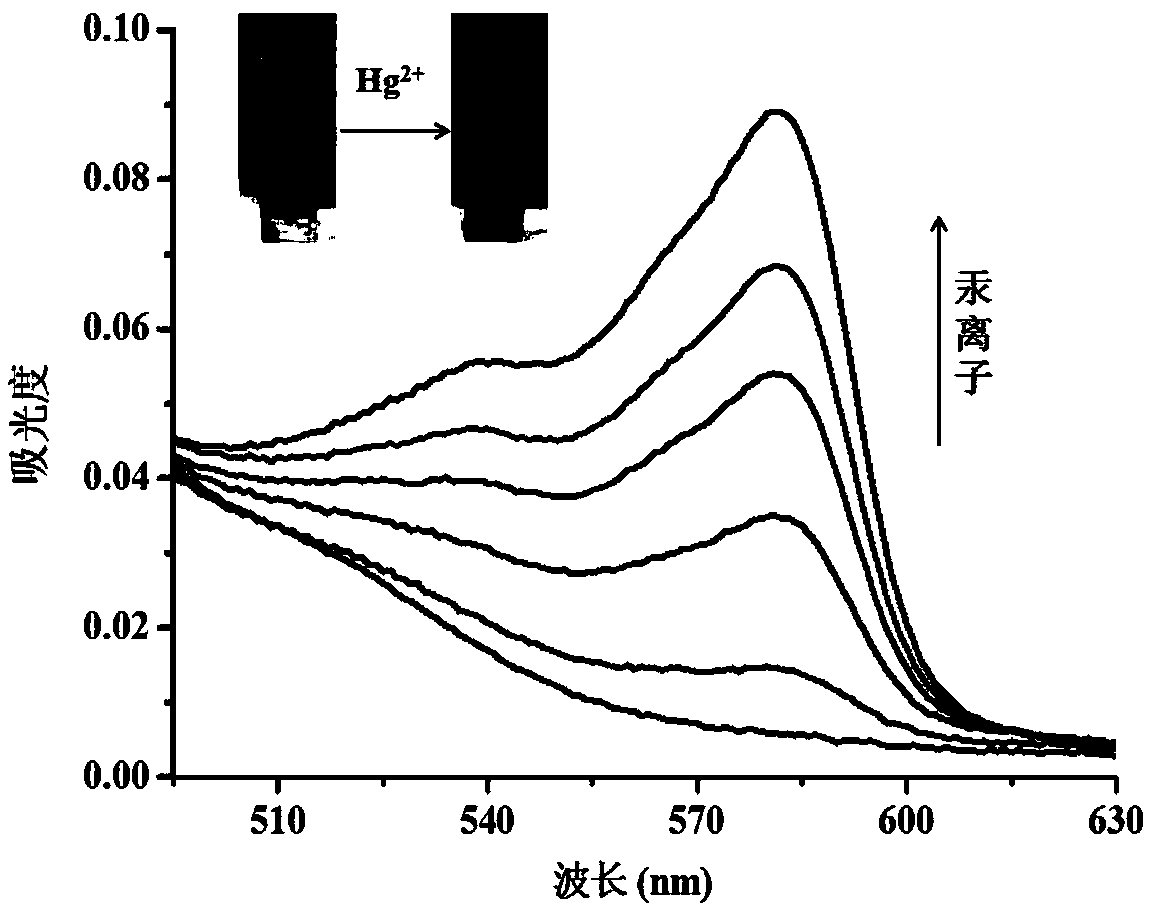Colorimetric fluorescent probe for ultrasensitive analysis of mercury based on resorufin
A technology of hydroxyl and sulfonic acid groups, which is applied to the analysis of materials, fluorescence/phosphorescence, and material excitation analysis. It can solve the problems of complex synthesis, insufficient selectivity, and insufficient response speed, etc., and achieve simple synthesis, good stability, To achieve the effect of selective recognition
- Summary
- Abstract
- Description
- Claims
- Application Information
AI Technical Summary
Problems solved by technology
Method used
Image
Examples
Embodiment 1
[0032]
[0033] (Scheme 1) Dissolve 200mg (0.71mmol) of resorufin compounds in 15mL of dichloromethane, then add 245.7mg (1.42mmol) of phenyl thiochloroformate and stir for 2h at room temperature, then use a rotary evaporator to carry out rotary evaporation column to obtain crude product. If a purer product is to be obtained, it can be passed through a column and then recrystallized in a mixed system of dichloromethane and petroleum ether (eg v / v, 1:5) to obtain a pure product. Obtained 210mg of orange pure product, the yield was 71%.
[0034] (Scheme 2) Dissolve 200mg (0.71mmol) of resorufin compounds in 15mL of dichloromethane, then add 184mg (1.07mmol) of phenyl thiochloroformate and stir at room temperature for 2h, then use a rotary evaporator to perform rotary evaporation to obtain crude product. If a purer product is to be obtained, it can be passed through a column and then recrystallized in a mixed system of dichloromethane and petroleum ether (eg v / v, 1:5) to obt...
Embodiment 2
[0039] figure 1 is the probe (5μM) added with Hg 2+Fluorescence spectra before and after (20μM), through the illustration we can see that the fluorescence changes before and after adding mercury ions are very obvious. It shows that the probe has a good response to mercury ions, and the probe can realize sensitive recognition of mercury ions.
Embodiment 3
[0041] Figure 2a are different concentrations of Hg 2+ (0-100nM) on the probe (5μM) fluorescence spectrum; Figure 2b are different concentrations of Hg 2 + (0-10μM) versus probe (10μM) UV absorption spectrum.
[0042] It can be seen that with the Hg in the probe solution 2+ As the concentration increases, the fluorescence intensity gradually increases, and at (0-100nM)Hg 2+ Concentration range, Hg 2+ The concentration has a good linear relationship with the fluorescence intensity. The standard limit of mercury ions in my country's drinking water standards is 0.001 mg / L. Therefore, the probe of the present invention can more accurately determine the content of mercury ions in the sample to be tested. In addition, it can be seen from the ultraviolet spectrum that the absorbance increases gradually with the increase of the concentration of mercury ions, indicating that the probe can be used as a colorimetric probe to detect mercury ions.
PUM
 Login to View More
Login to View More Abstract
Description
Claims
Application Information
 Login to View More
Login to View More - R&D
- Intellectual Property
- Life Sciences
- Materials
- Tech Scout
- Unparalleled Data Quality
- Higher Quality Content
- 60% Fewer Hallucinations
Browse by: Latest US Patents, China's latest patents, Technical Efficacy Thesaurus, Application Domain, Technology Topic, Popular Technical Reports.
© 2025 PatSnap. All rights reserved.Legal|Privacy policy|Modern Slavery Act Transparency Statement|Sitemap|About US| Contact US: help@patsnap.com



